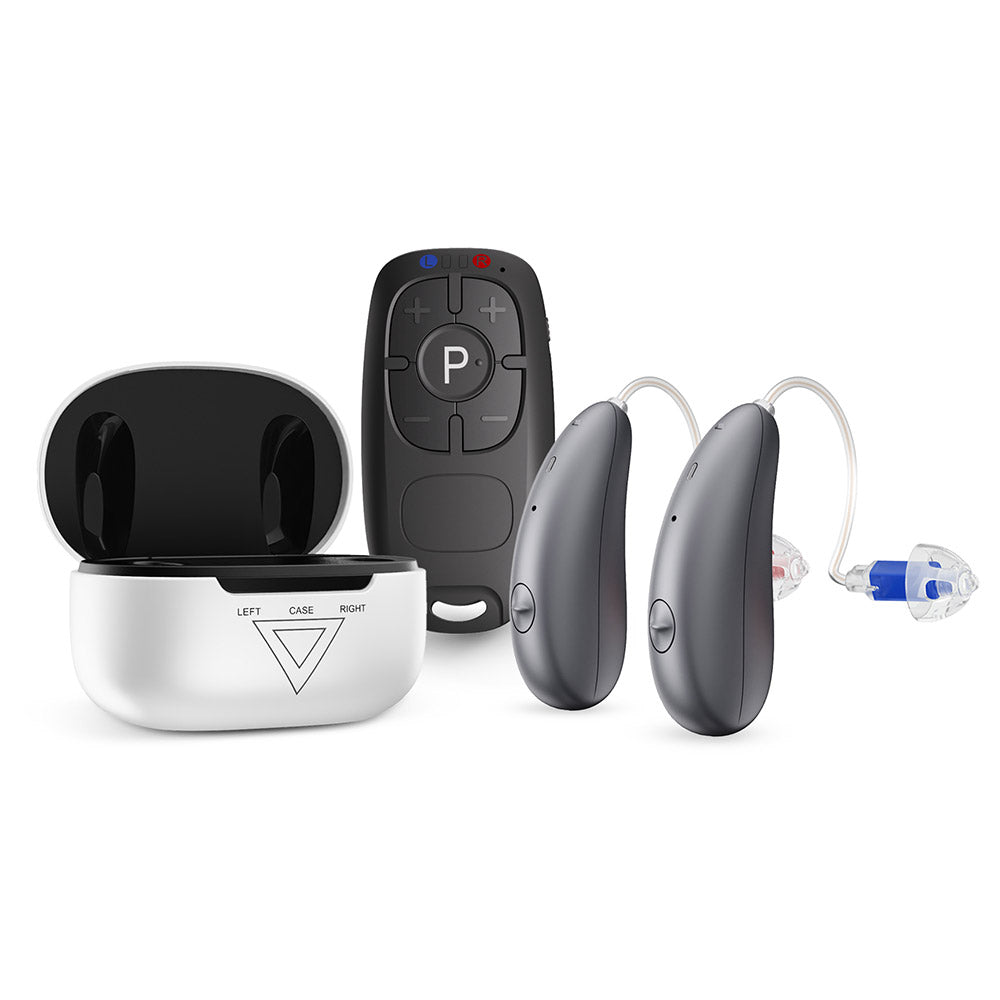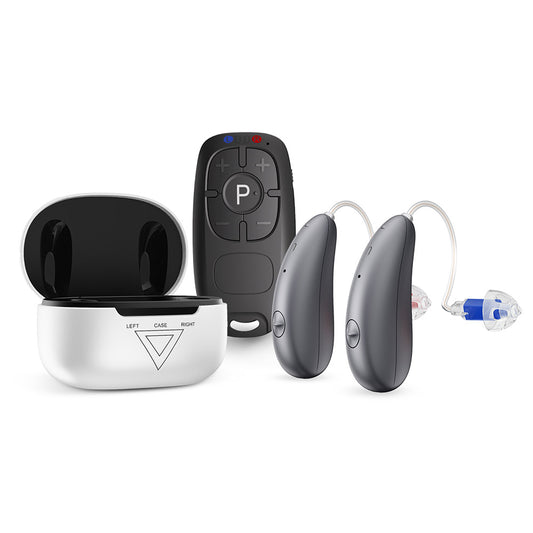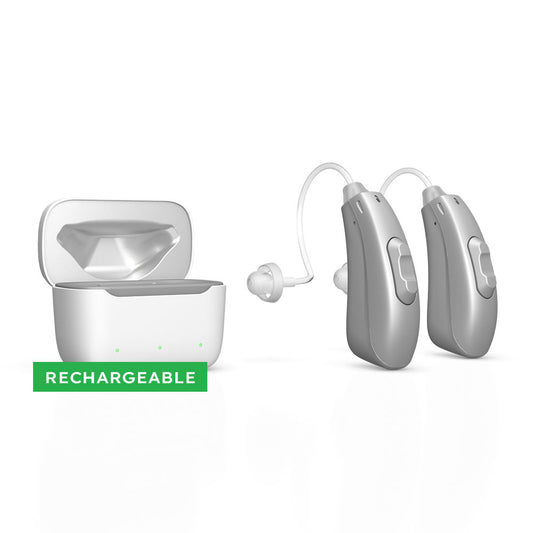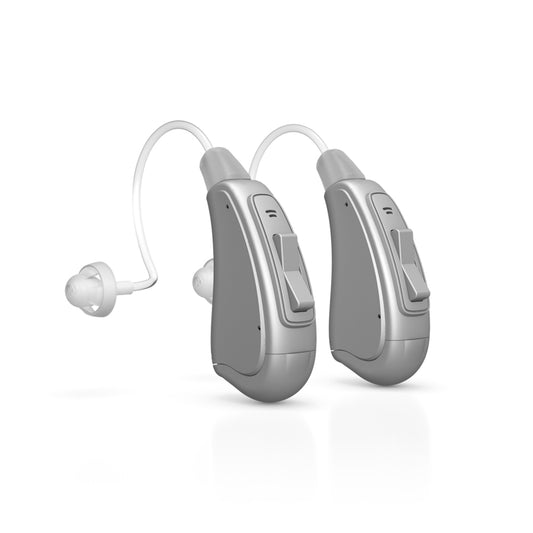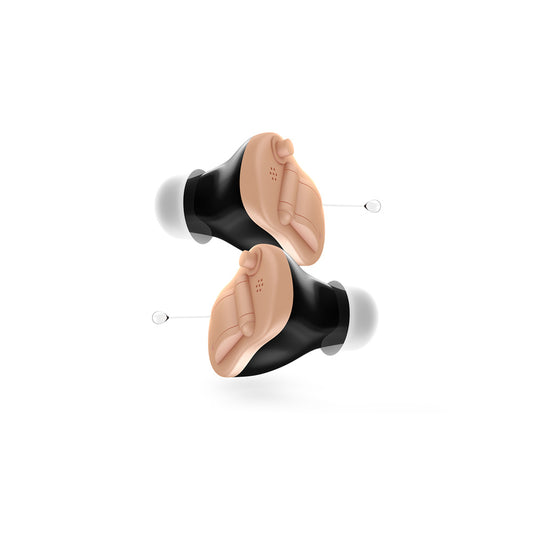Best Hearing Aids UK (2026): A Complete Guide
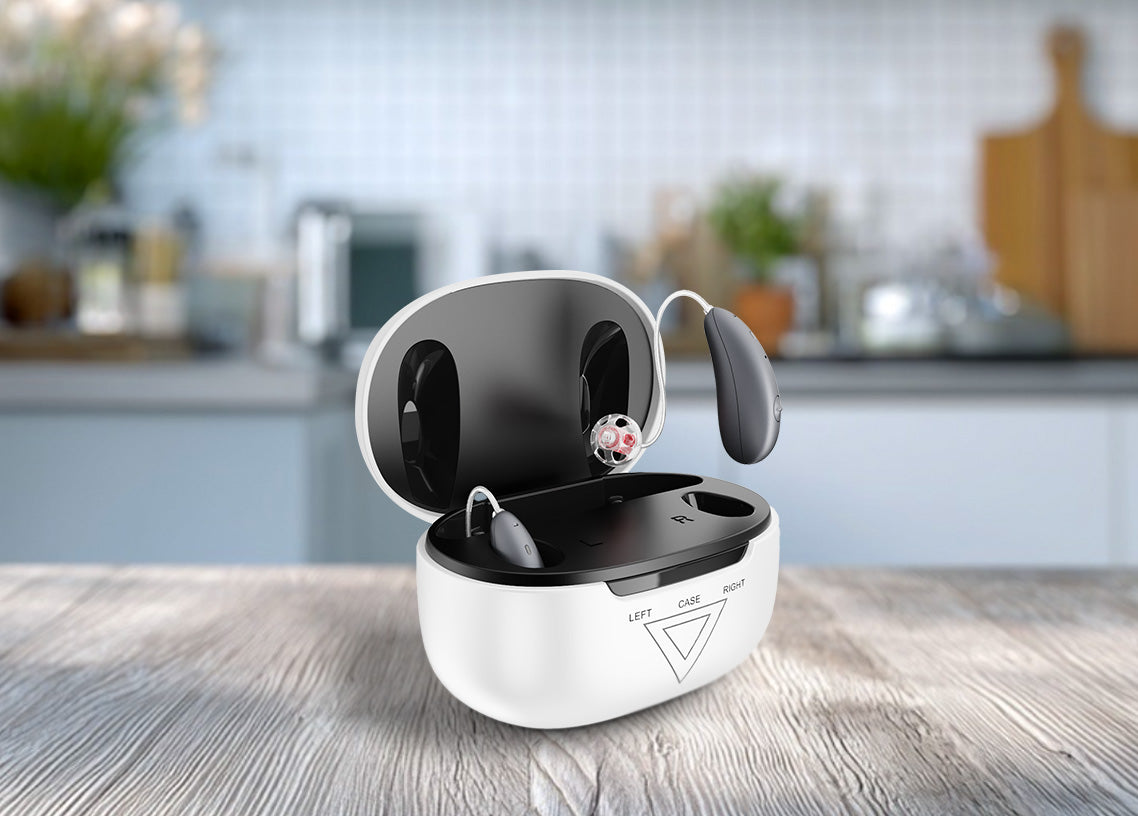
Overview
This 2026 guide compares the UK’s best hearing aids, from discreet OTC options like PocketAid and AirPods Pro 2 to advanced in-clinic models from Oticon, ReSound, Phonak, and Starkey, with prices, features, and buyer advice.
About this Guide
Hearing aids have evolved far beyond simple amplifiers. Today’s devices blend cutting-edge speech processing, connectivity, and comfort, but the UK market is complex. Some devices are fitted by audiologists, others can be bought over the counter (OTC) without a clinic visit.
Popular hearing aids from leading hearing aid manufacturers are shaping the UK market, offering consumers a wide range of trusted and innovative options.
This guide distils the best options into two categories: In-Clinic Hearing Aids (fitted by professionals) and OTC Hearing Aids (self-fit), plus practical buyer advice.
Hearing tests play a crucial role in selecting the right device, and independent advice from experienced hearing aid providers ensures you receive the most suitable solution for your needs.
Whether you are interested in new hearing aids or want to explore the latest hearing aid technology available in the UK, this guide will help you make an informed choice.
In 2026, Britain’s hearing aid market will undergo its biggest shake-up in decades.
Once the preserve of NHS fittings and high-street audiology chains, the sector has been disrupted by a wave of over-the-counter (OTC) devices, tech-driven “hearables,” and a new generation of digital hearing aids offering smarter noise reduction and speech separation than ever before.
For the first time, consumers with mild to moderate hearing loss can buy legally-approved self-fit hearing aids online or in-store without booking a single clinic appointment. Apple has joined the fray with hearing-enhanced AirPods, Australian brand PocketAid has landed in the UK after massive success overseas, and established names like Oticon, ReSound, Phonak and Starkey are doubling down on advanced receiver-in-canal and behind-the-ear models that promise longer battery life, improved background noise management, and better sound quality in every environment.
But with dozens of models, price points from under £300 to well over £3,000, and technology jargon that even seasoned tech reviewers find dizzying, choosing the right hearing aid in 2025 is no small task. This guide cuts through the marketing, compares the most popular hearing aids available in the UK right now, and explains what makes each worth your attention, whether you’re buying your first discreet OTC aid or seeking the best in-clinic fitting for more complex hearing loss.

Market Overview
NHS: Free nhs hearing aids, batteries, and repairs if eligible, but limited to certain models and styles.
Private Clinics: Greater choice and technology access, including private hearing aids, but costs range from ~£500 to £3,500+ per ear depending on features and aftercare.
OTC Hearing Aids: Since 2025, self-fit devices that meet UK medical device rules can be sold without a prescription. The most common buyers of OTC hearing aids are people who have already been through the traditional hearing aid process of in-clinic appointments and adjustments. They can be great for mild–severe loss, but are not a substitute for professional diagnosis if you have complex or sudden changes in hearing.
When choosing between these options, comparing hearing aids and considering your personal preferences is essential to find the right hearing solution for your needs.
Buyer’s Guide: Choosing the Right Hearing Aid for Your Needs
When looking for the best hearing aids in the UK, it’s not just about brand names, it’s about matching the type of hearing aid to your hearing needs and lifestyle.
Styles and Fitting
Many of today’s most popular digital hearing aids come in two main styles: receiver in canal (RIC) and behind the ear (BTE). In ear hearing aids and invisible hearing aids sit deeper in the ear canal for a more discreet look, while BTE designs are often easier to handle and may offer more features for severe hearing loss.
Performance Features
A modern digital hearing aid can include noise reduction and background noise management systems, which focus on separating speech from surrounding sounds. This improves sound quality in noisy places like restaurants or public transport. If you have close to normal hearing in some situations but struggle in others, these features can make a noticeable difference.
Comfort, Battery, and Maintenance
The easiest hearing aid to live with is one you’ll actually wear daily. Comfort, fit, and battery life all matter. Rechargeable hearing aids are growing in popularity for convenience, while replaceable hearing aid batteries may be better if you travel often.
Assessment and Customisation
Before you wear hearing aids, it’s vital to have proper hearing tests to determine your level of hearing loss. This ensures you get the right hearing aid and the best hearing possible.
Balancing Discretion and Power
If appearance matters, discreet hearing aids and invisible hearing aids offer subtle designs, though they may have fewer controls. Those with severe hearing loss often need larger BTE devices that provide higher amplification and advanced background noise management.
Best In-Clinic Hearing Aids (Prescription-Fitted) 2025
-
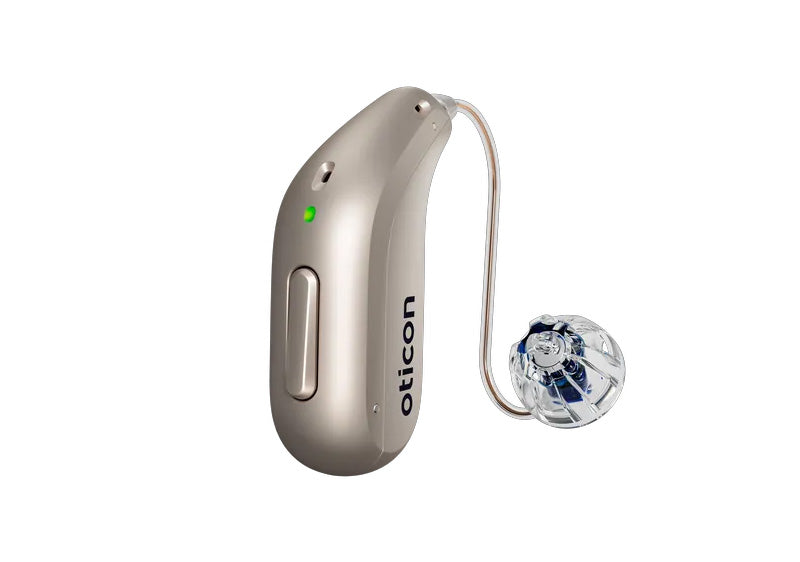
1. Oticon Intent
Key tech: Motion sensors that detect listening environment changes; adaptive speech-in-noise processing; utilises a deep neural network to process sound and adapt to different sound environments for improved speech understanding.
Why it stands out: Ideal for active users who move between quiet and noisy spaces, letting the aid adjust automatically. Enhances speech understanding and better speech understanding in noisy environments by improving the signal to noise ratio. Oticon Intent uses advanced sound processing and learns from user behavior to process sound more naturally.
UK availability: Widely fitted by independents and nationals; available in rechargeable receiver in canal (RIC) and custom styles. -
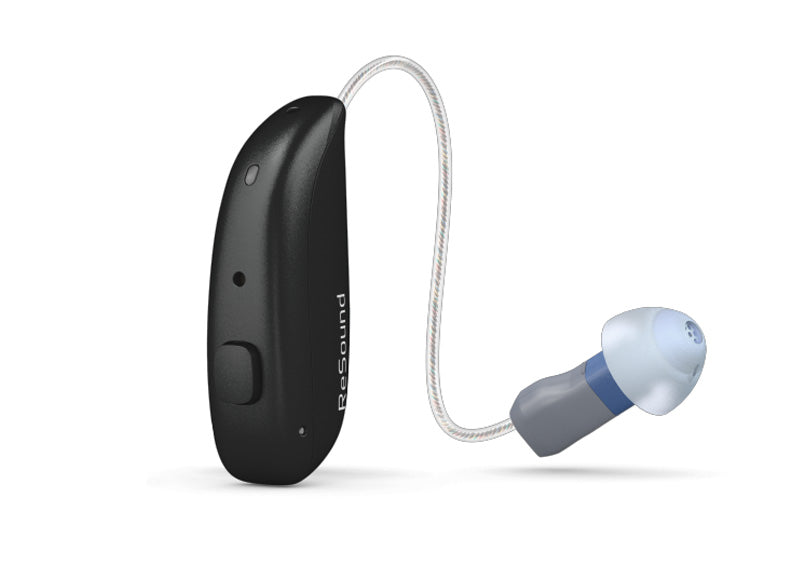
2. ReSound Nexia
Key tech: First hearing aid range with Auracast / LE Audio for next-gen wireless broadcast audio, featuring advanced background noise management and the ability to separate speech from noise for clearer conversations.
Why it stands out: Future-proof for public venue listening (e.g., transport hubs, theatres); strong streaming options. These features aid users by providing reduced listening effort and improved speech clarity in challenging environments.
UK availability: Offered in multiple styles, with portable charging cases. -
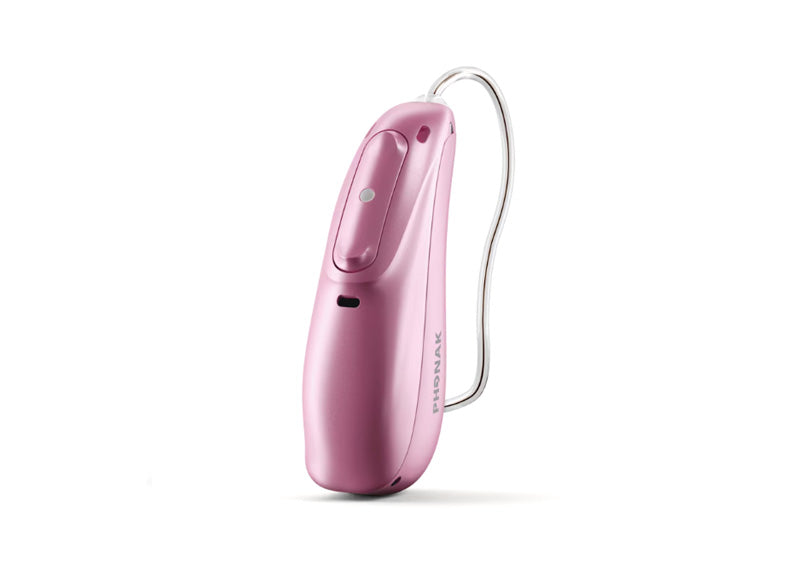
3. Phonak Audéo Lumity
Key tech: StereoZoom 2.0 for focused listening; universal Bluetooth; optional water resistance.
Why it stands out: Suitable for a wide range of losses, including mild - moderate hearing loss.
UK availability: Common in both independent and chain clinics.
-

4. Starkey Genesis AI
Key tech: Redesigned sound processor, extended battery life, wellness tracking in app, Edge AI hearing aids with AI-driven features, and the ability to create a personal hearing profile for customised sound settings.
Why it stands out: Wide custom-fit hearing aids with options for comfort and discretion, including often included in modern hearing aids such as in ear hearing aids and invisible hearing aids; integrates health features alongside hearing support.
UK availability: Available through authorised Starkey partners.
Best Over the Counter Hearing Aids (OTC) 2025
-
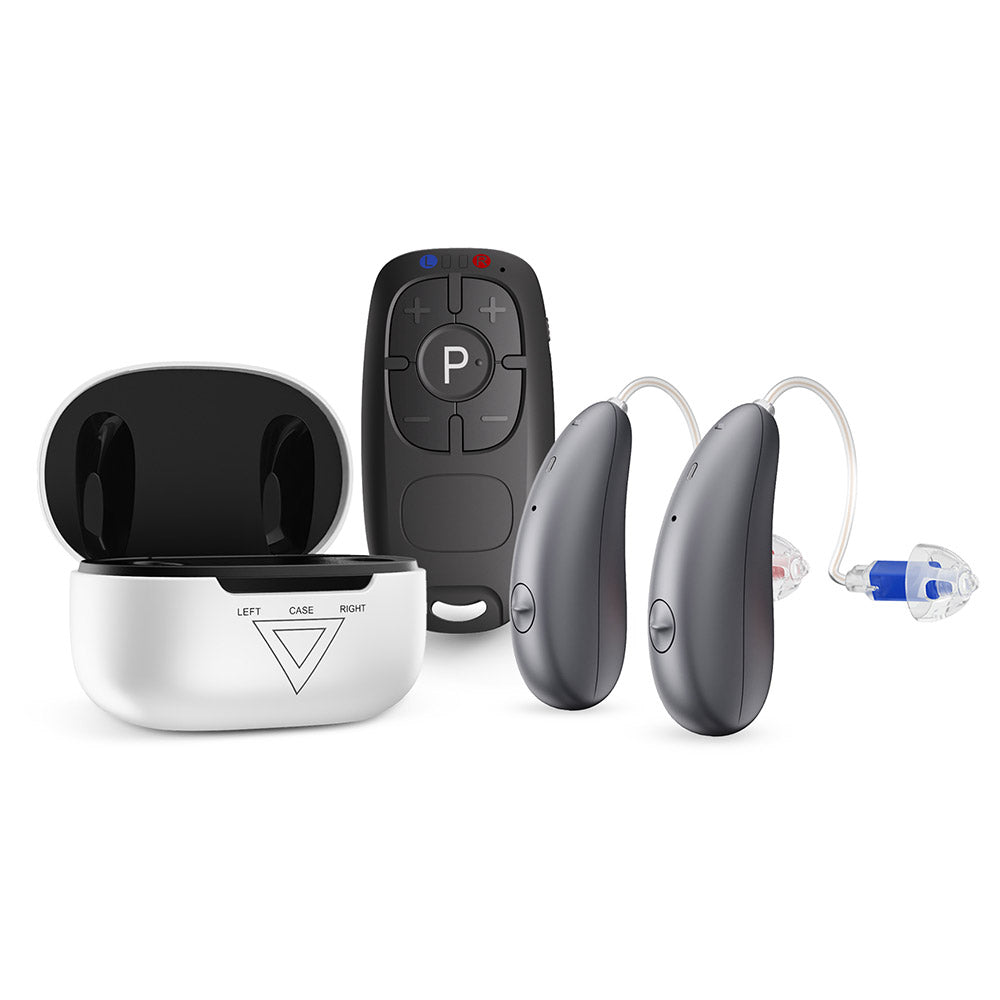
1. PocketAid Diamond Stream 12
Key tech: Bluetooth-enabled OTC hearing aid with 12 processing channels; integrates EarWave Technology for more lifelike sound quality; supports wireless streaming for calls, music, and TV; directional microphones and digital noise reduction improve separating speech from background noise.
Why it stands out: Bridges the gap between a hearing aid and a connected hearable, allowing users to manage calls and media alongside amplification. EarWave Technology ensures streamed audio sounds rich while conversation in noisy spaces remains clear. Ideal for tech-savvy users wanting convenience and high-quality sound without a clinic fitting.
UK availability: Available online from PocketAid UK; delivered pre-configured with adjustable programs; compatible with both iOS and Android devices. Delivery typically takes 4 - 6 business days. -
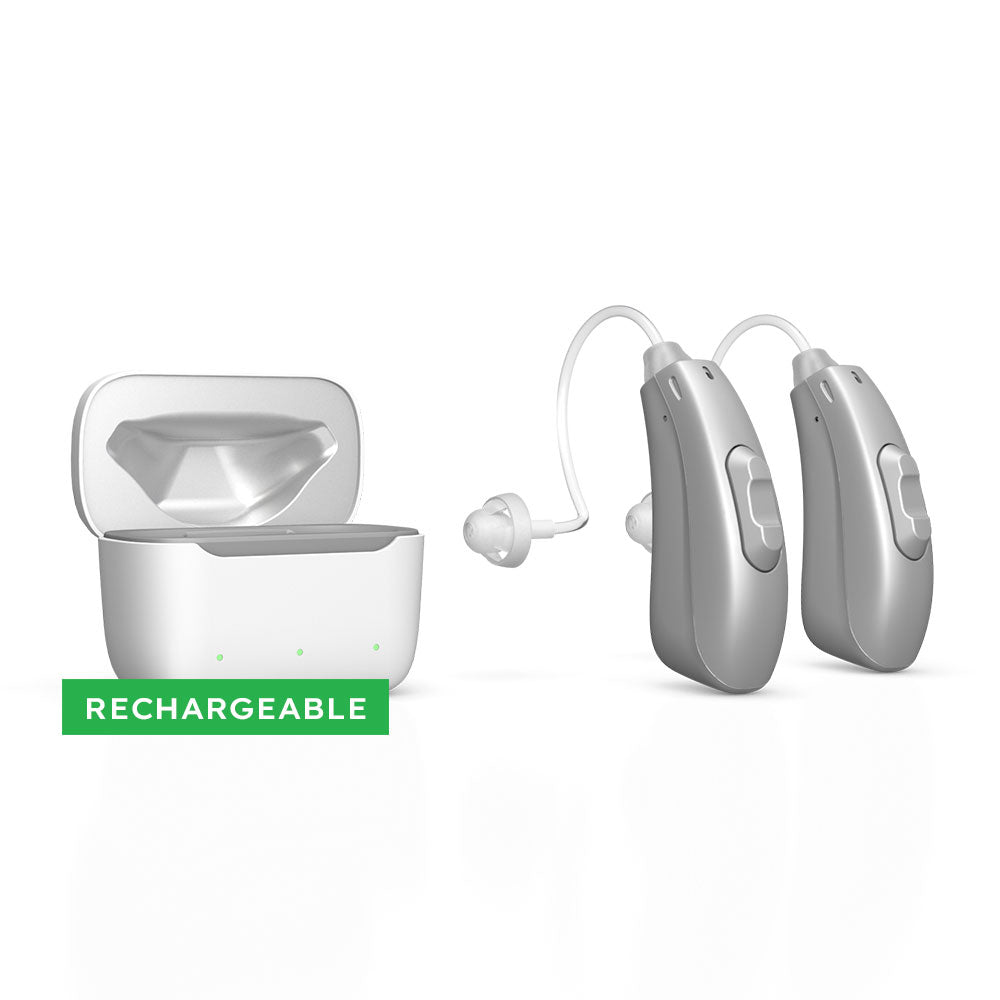
2. PocketAid Jaspa 3 Dura
Key tech: Rechargeable behind-the-ear (BTE) OTC device with PocketAid’s proprietary EarWave Technology for more natural sound reproduction; user-adjustable “Clarity Button” for instant sound profile changes; designed for mild to moderate hearing loss; multi-channel digital noise reduction for clearer speech in noisy spaces.
Why it stands out: Combines the durability and amplification power of a BTE with the convenience of rechargeability and simple, on-device controls. EarWave Technology helps preserve natural tone while boosting speech clarity, making it a strong everyday option for users who move between quiet and noisy spaces.
UK availability: Sold direct via PocketAid’s UK website; available for home delivery with a 30-day money-back guarantee; no clinic visit required. Delivery typically takes 4 - 6 business days. -
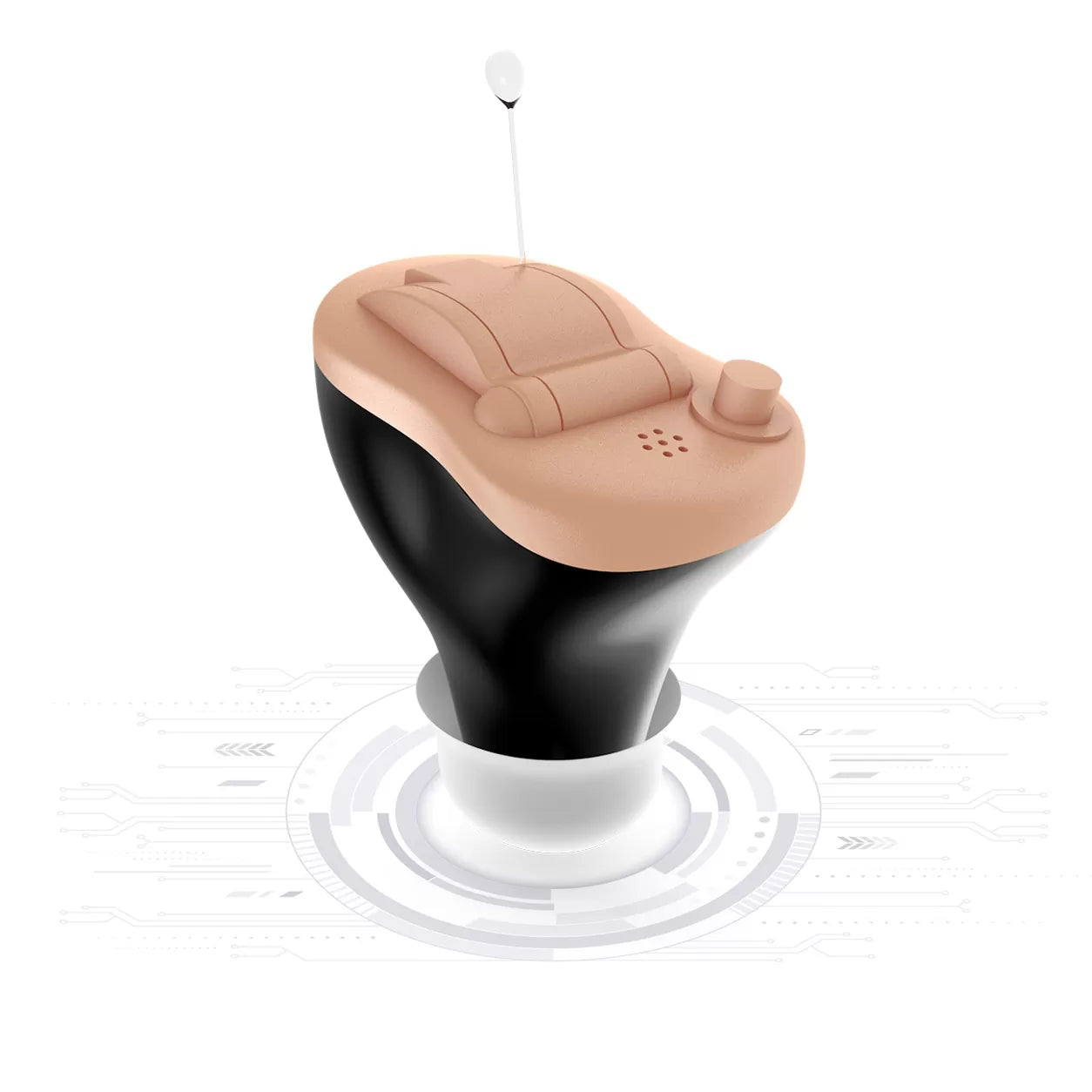
3. PocketAid Spot Mini 6
Key tech: Compact completely-in-canal (CIC) OTC device with 6 processing channels; uses EarWave Technology to maintain a natural sound profile while amplifying speech; discreet design for minimal visibility; digital feedback suppression and noise reduction for clearer listening; aimed at mild to moderate loss.
Why it stands out: One of PocketAid’s most discreet hearing aids, ideal for users concerned about visibility while still needing effective amplification. EarWave Technology keeps voices sounding natural, helping first-time wearers transition from normal hearing with less adjustment fatigue.
UK availability: Sold through PocketAid UK with direct-to-door delivery; offered in skin-tone colours to blend in for a barely-there appearance. Delivery typically takes 4 - 6 business days. -
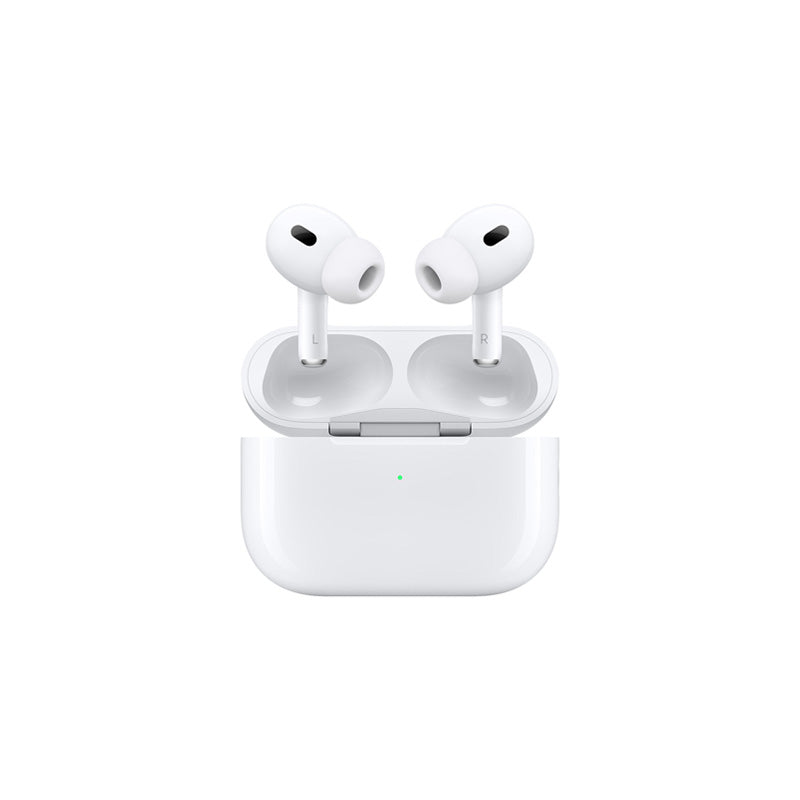
4. Apple AirPods Pro 2 (Hearing Aid Mode)
Key tech: Built-in hearing test to create a personalised hearing profile; Hearing Aid Mode for mild to moderate perceived hearing loss; adaptive sound processing to adjust to different environments; seamless integration with iPhone and iOS accessibility settings.
Why it stands out: Offers an accessible, non-traditional entry into hearing assistance for tech-savvy users. Adapts automatically to changing listening environments, doubling as both a hearing support device and a premium set of earbuds for music, calls, and media.
UK availability: Sold through Apple and major UK electronics retailers; widely available online and in-store; compatible only with iOS devices running the latest software.
PocketAid Hearing Aid Prices
-
Diamond Stream 12 Rechargeable Bluetooth Hearing Aid
Regular price From £720.00 GBPRegular priceUnit price / per -
Jaspa 3 Dura Rechargeable Hearing Aid
Regular price From £449.00 GBPRegular priceUnit price / per -
Jaspa 3 BTE Hearing Aid
Regular price From £319.00 GBPRegular priceUnit price / per -
Spot Mini 6 Hearing Aid
Regular price From £419.00 GBPRegular priceUnit price / per
OTC vs In-Clinic - Which to Choose?
-
Choose In-Clinic if:
- You are concerned that you may have complex hearing health requirements.
- You have not had your hearing assessed previously.
- You want custom fitting and on-going appointments and in-clinic adjustments
-
Choose OTC if:
- You have mild to severe hearing loss.
- You want a low-cost, low-commitment starting point.
- You’re comfortable with app-based or manual adjustments.
- You've been through the traditional process and been left frustrated or underwhelmed
Final Word
The best hearing aid depends on your hearing profile, lifestyle, and support needs. PocketAid and AirPods Pro 2 make self-fit hearing help more accessible than ever - but in-clinic devices like Oticon Intent or ReSound Nexia remain the gold standard for complex cases. Whichever assistive listening devices you choose, make sure you're making an informed decision.
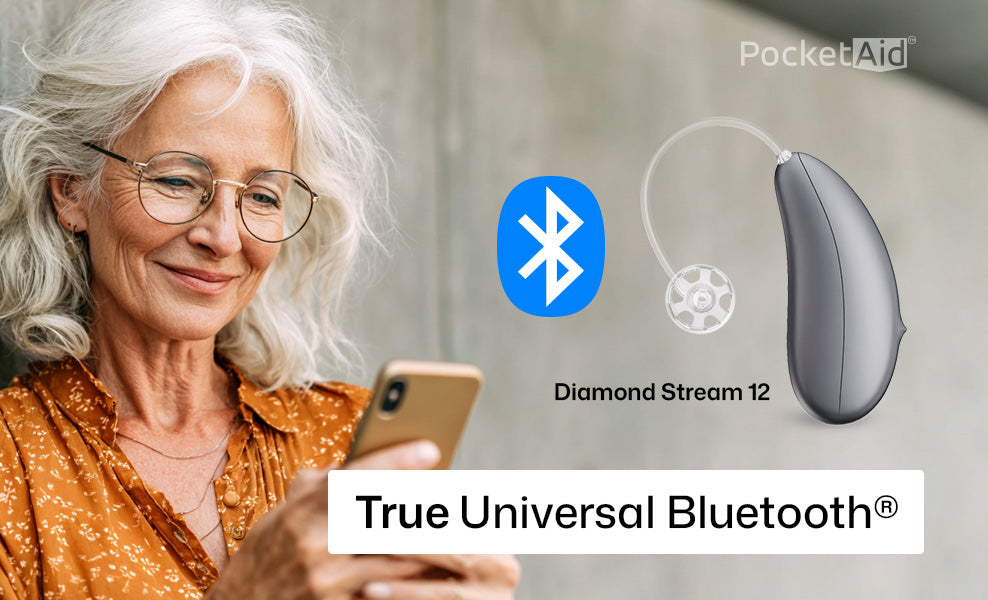
It Just Works.
The PocketAid Diamond Stream 12 connects seamlessly to any Bluetooth enabled device, including phones (Apple and Android), Televisions, Tablets, Computers and many more.
